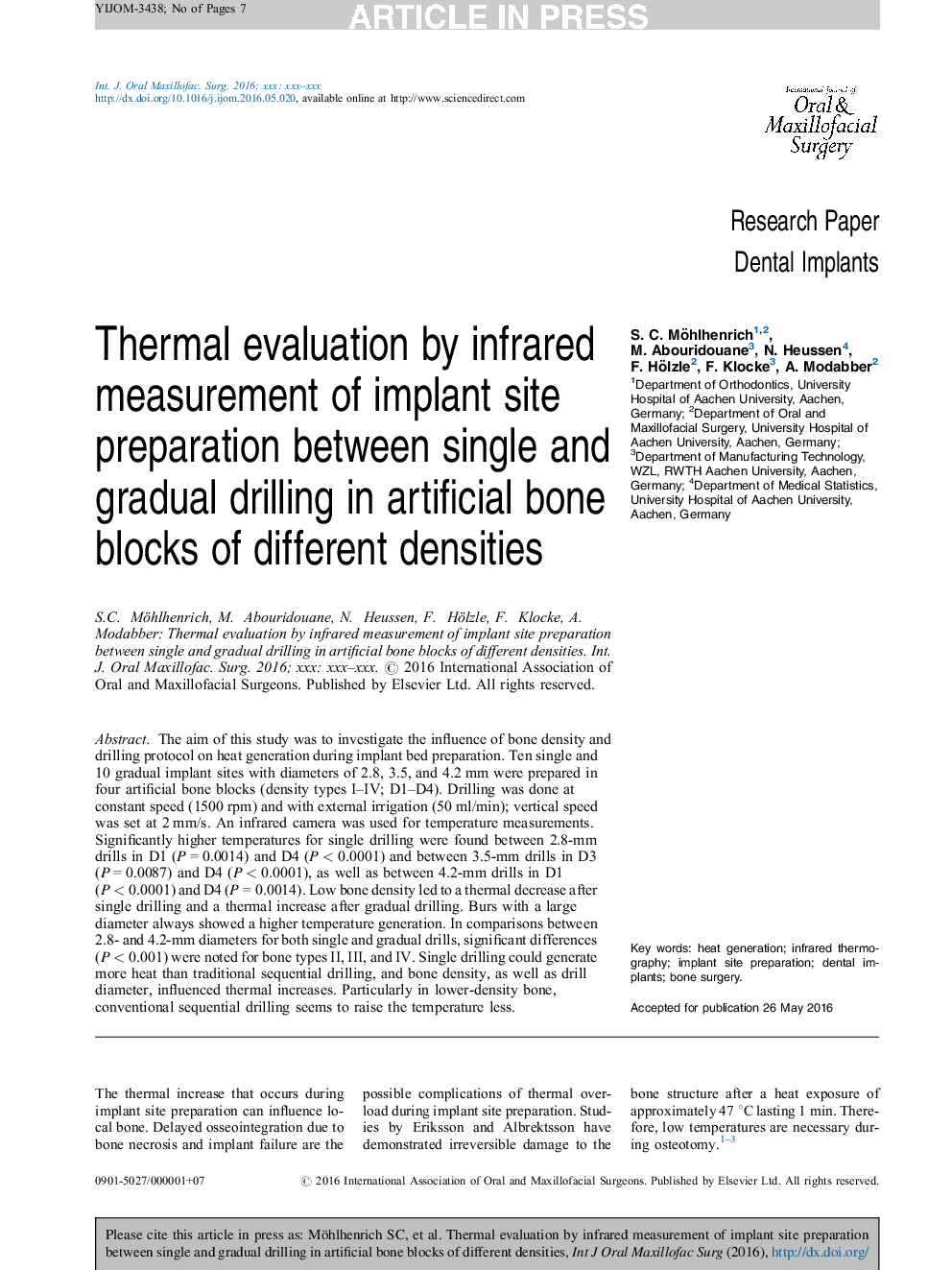| Article ID | Journal | Published Year | Pages | File Type |
|---|---|---|---|---|
| 5638942 | International Journal of Oral and Maxillofacial Surgery | 2016 | 7 Pages |
Abstract
The aim of this study was to investigate the influence of bone density and drilling protocol on heat generation during implant bed preparation. Ten single and 10 gradual implant sites with diameters of 2.8, 3.5, and 4.2Â mm were prepared in four artificial bone blocks (density types I-IV; D1-D4). Drilling was done at constant speed (1500Â rpm) and with external irrigation (50Â ml/min); vertical speed was set at 2Â mm/s. An infrared camera was used for temperature measurements. Significantly higher temperatures for single drilling were found between 2.8-mm drills in D1 (PÂ =Â 0.0014) and D4 (PÂ <Â 0.0001) and between 3.5-mm drills in D3 (PÂ =Â 0.0087) and D4 (PÂ <Â 0.0001), as well as between 4.2-mm drills in D1 (PÂ <Â 0.0001) and D4 (PÂ =Â 0.0014). Low bone density led to a thermal decrease after single drilling and a thermal increase after gradual drilling. Burs with a large diameter always showed a higher temperature generation. In comparisons between 2.8- and 4.2-mm diameters for both single and gradual drills, significant differences (PÂ <Â 0.001) were noted for bone types II, III, and IV. Single drilling could generate more heat than traditional sequential drilling, and bone density, as well as drill diameter, influenced thermal increases. Particularly in lower-density bone, conventional sequential drilling seems to raise the temperature less.
Related Topics
Health Sciences
Medicine and Dentistry
Dentistry, Oral Surgery and Medicine
Authors
S.C. Möhlhenrich, M. Abouridouane, N. Heussen, F. Hölzle, F. Klocke, A. Modabber,
